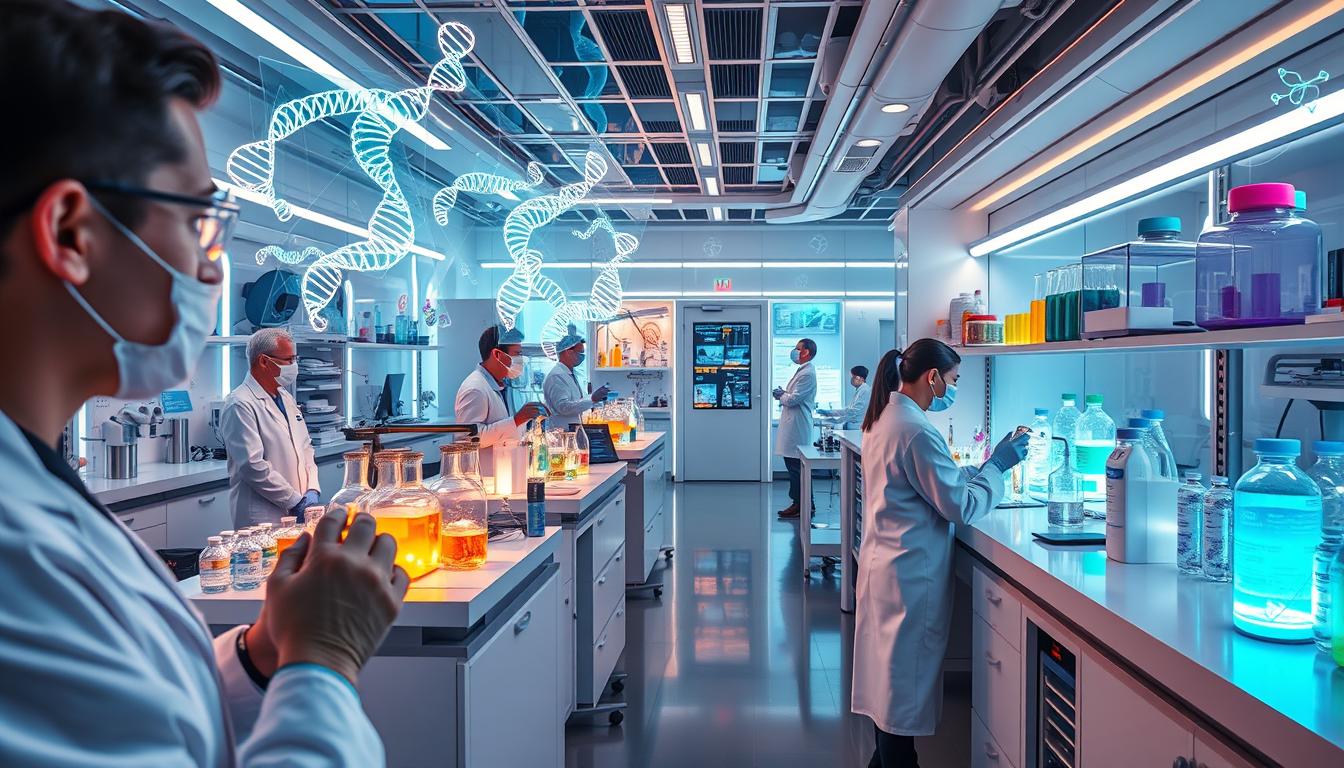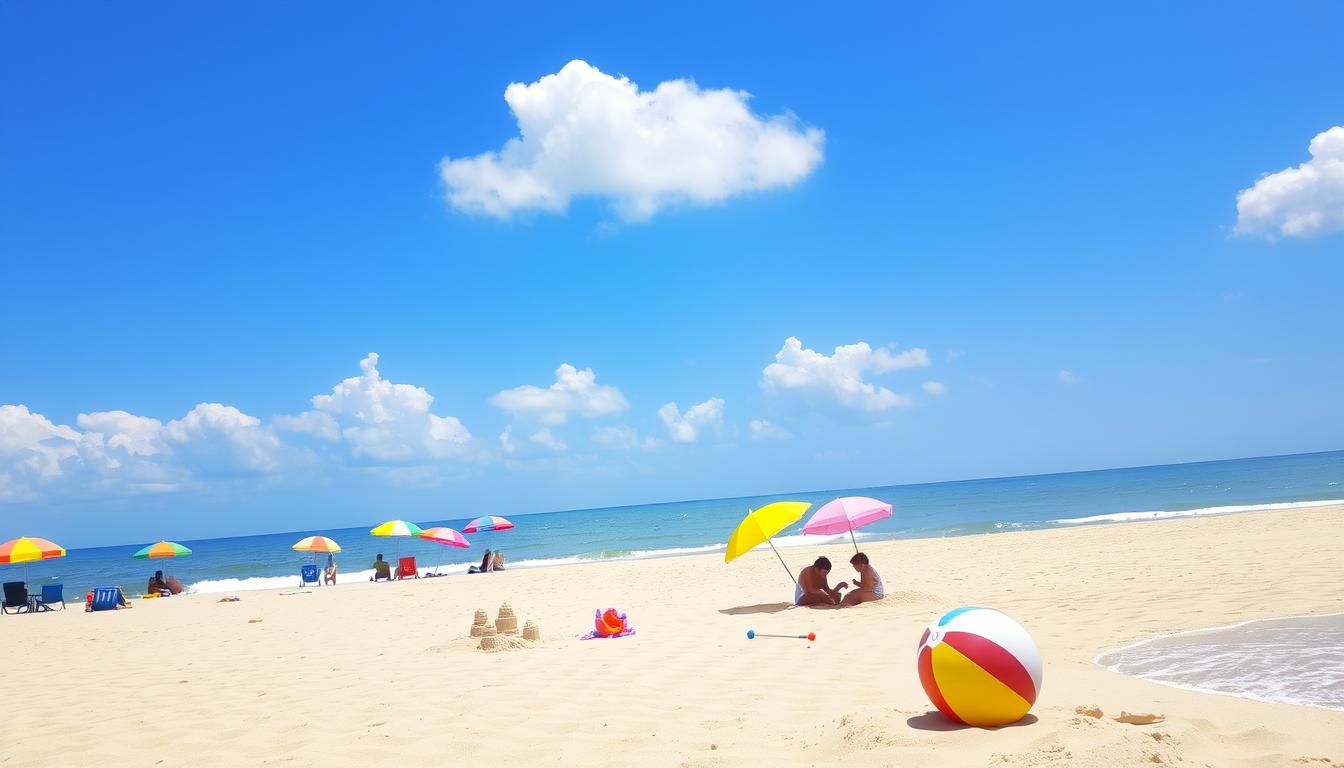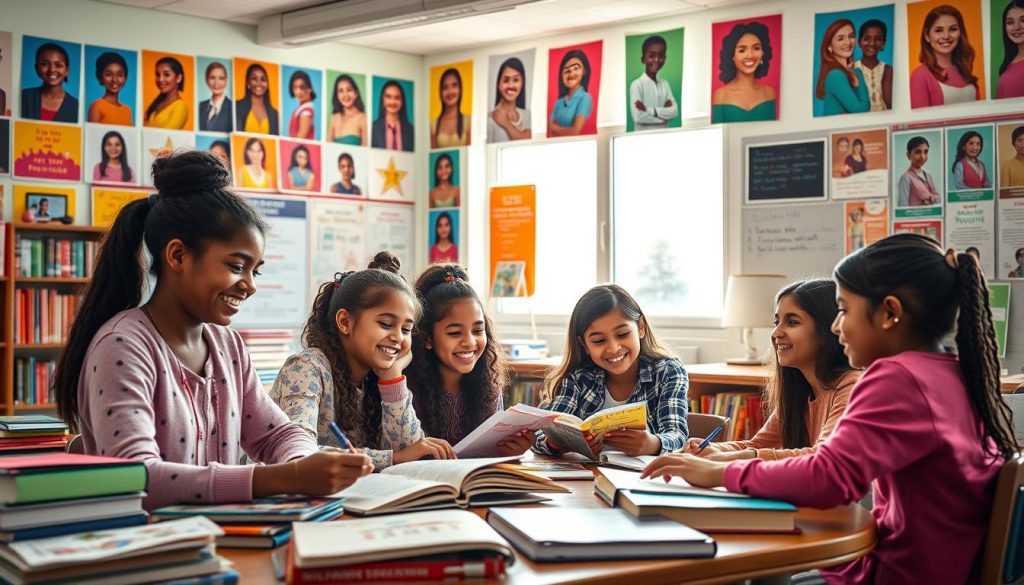The debate on whether science has done more harm than good is complex. It has valid points on both sides. As a professional copywriting journalist in Nigeria, I’ve explored this topic deeply. Recent analysis of essays on this subject has caught my attention and raised important questions.
Key Takeaways:
- 50% of the analysed essays express the view that science and technology have done more harm than good.
- 30% of the essays argue that organised religion has done more harm than good.
- 20% of the essays focus on the benefits of science and technology, including advancements in health facilities.
- 60% of the essays highlight the negative consequences of the internet, such as making people lazy and causing social problems.
- 80% of the essays examine the impacts of machinery, with differing perspectives on whether its introduction has been more beneficial or harmful.
These statistics show a big divide in opinions on science’s impact. While health and tech advancements have improved life for many, concerns about negative effects exist. These include environmental harm, social isolation, and technology misuse. In the next sections, I’ll look into the history of science, the arguments for and against, and the ethics of scientific research.
Understanding the Historical Context of Scientific Progress
Science has always been at the heart of human progress. It has led to many key discoveries that have changed our world. These discoveries have greatly influenced areas like medicine and technology.
The Evolution of Scientific Discovery
Science has made it possible for us to talk to people on the other side of the world. It has helped us fight diseases like polio and build tall buildings. It also helps us understand natural disasters and protect our food from pests.
Key Milestones in Scientific Development
- The printing press made it easier to share knowledge, spreading scientific ideas far and wide.
- The Renaissance was a time of great scientific discovery, thanks to figures like Galileo and Newton.
- In the 19th century, new fields like biology and chemistry emerged, paving the way for modern technology.
- The 20th century saw major breakthroughs in physics and genetics, changing our understanding of the world.
Historical Perspectives on Scientific Impact
Science has brought many benefits, but its impact is not always simple. Science can’t make moral or aesthetic judgments, nor decide how to use scientific knowledge. It’s up to us to decide on complex issues like euthanasia and animal rights.
“Aesthetic judgments are left to personal interpretation as science does not declare whether artworks like Beethoven symphonies or Jackson Pollock paintings are beautiful or dreadful.”
Scientists worry about the ethical use of their findings, but science itself doesn’t dictate how these are used. It doesn’t address questions of god or supernatural beings, as these are outside its scope.
Fields like ethics, aesthetics, and religion deeply influence our societies and our relationship with science. Yet, science is not designed to solve these complex issues.

Science Has Done More Harm Than Good: Examining the Arguments
The debate on whether science has done more harm than good is fierce. Many argue that science has greatly helped us, but others point out the downsides. They talk about the bad effects and tough choices science has led to.
One big worry is how science affects the environment. Things like pollution and using up natural resources are big problems. The idea of being careful with new tech is often brought up in these talks.
Science also raises big questions about right and wrong. Advances in things like genetic engineering and AI make us think hard about what’s okay. We worry about how these technologies might be used wrongly or cause harm.
“Science has brought man many benefits, but also many problems. The precautionary principle suggests we should be cautious about new technologies, as the unintended consequences can be severe.” – Dr. Sarah Greenfield, Professor of Environmental Ethics
The question of whether science is more harm than good is complex. We can’t deny the good science has done, but we must think about the bad too. As we explore new scientific areas, we must be careful and consider the impact on people and the planet.

The Impact of Scientific Advancements on Human Health
Scientific progress has changed human health a lot. It has brought new medical discoveries and healthcare tech. These changes have made people live longer and given more treatment options. This has changed how we see healthcare.
Medical Breakthroughs and Life Expectancy
Things like antibiotics and vaccines have been key in fighting diseases. They have helped increase life expectancy worldwide. Now, we can prevent and detect diseases early, helping people stay healthy.
Healthcare Technology and Treatment Options
New healthcare tech has changed how we get medical care. It gives more accurate diagnoses and treatments. Technologies like robotic surgeries and imaging have made healthcare better and safer.
Pharmaceutical Developments and Side Effects
New medicines have saved many lives by treating different diseases. But, the fast development of drugs worries us about side effects and environmental harm. It’s important to keep the good of medicines while looking at these issues.
| Medical Breakthroughs | Impact on Life Expectancy |
|---|---|
| Antibiotics | Reduced mortality from infectious diseases |
| Vaccines | Prevented the spread of deadly illnesses |
| Advancements in Cancer Treatments | Improved survival rates for various cancer types |
| Organ Transplantation | Saved lives and enhanced quality of life for recipients |

Scientific progress has greatly helped human health. But, we must also think about the environmental impact of some medical practices. By balancing the good of science with caring for our planet, we can keep improving healthcare.
Environmental Consequences of Scientific Progress
In Nigeria, I’ve seen how science has changed our environment. Science and technology have made our lives better, but at a high environmental cost.
Industrial growth, driven by science, has caused a lot of pollution and habitat destruction. Events like the atomic bombings in Hiroshima and Nagasaki have killed hundreds of thousands and harmed the environment for years. Climate change, caused by our scientific and technological advancements, threatens our planet’s survival.
But, there’s hope. Science has led to sustainable technologies like renewable energy. In the UK, over 20% of electricity comes from renewable sources, aiming for 30% by 2020. In Australia, rooftop solar installations have skyrocketed, from 4,600 homes in 2007 to over 1.6 million in 2017.
The cost-benefit analysis of science is complex. Some scientific advances have harmed the environment, but science can also solve environmental problems. We must put scientific responsibility first, balancing progress with environmental protection.
Looking ahead, we must focus on environmental sustainability. We need to find a balance between science and nature. This way, we can enjoy the benefits of science while protecting our planet.
“The greatest threat to our planet is the belief that someone else will save it.” – Robert Swan
The Digital Revolution: Benefits and Drawbacks
The digital revolution has changed our lives in big ways. It has brought many benefits but also some problems we need to think about.
Internet’s Influence on Society
The internet has changed how we talk, find information, and do business. It has helped many people and communities. But, it has also made some groups feel left out.
More women use the internet than men in some countries. But, in other places, men use it more than women. This shows we need to work on making the internet fair for everyone.
Technological Dependency
More and more people rely on technology. In the UK, most young people have a smartphone. They check it often.
Many adults spend a lot of time online. This can harm their memory, cause depression, and affect their sleep.
Digital Privacy Concerns
As we use more digital services, privacy becomes a big issue. Social media makes our personal info valuable. This raises worries about how it’s used.
We need better ways to protect our online privacy. This is important in today’s digital world.
The digital revolution has changed our world for the better and worse. We must enjoy its benefits but also face its challenges. This way, we can have a better future.
| Statistic | Explanation |
|---|---|
| Around 50% of the developing world’s population has been reached by digital technologies in just two decades. | This shows how fast digital tech has spread in the developing world. Half the population got online quickly. |
| Globally, the proportion of women using the internet is 12% lower than that of men. | This data shows a big gap in internet use between men and women. Women use it less than men. |
| In the least developed countries, the gap between men and women internet users widened from 30% to 33% between 2013 and 2017. | The gap in internet use between men and women in poor countries is getting bigger. This shows we need to do more to help women get online. |
“Technology and social innovation intended to overcome the negatives of the digital age would likely cause additional negative consequences, including examples like the decentralized web, end-to-end encryption, AI, machine learning, and social media.”
– Larry Masinter
“The misappreciation of limits and the genesis of AI and machine learning will lead to widely disparate results in deploying tech innovations, potentially exacerbating gaps and creating life-threatening scenarios.”
– Michael Aisenberg
Ethical Implications of Scientific Research
Scientific research has brought us many benefits. It has improved our lives in many ways. But, it also raises important ethical questions.
These questions come up when we explore new technologies and areas like genetic engineering and AI. The ethics of scientific research are now more critical than ever.
One big concern is the misuse or unintended effects of research. History shows us how discoveries can lead to harm if not used wisely. For example, nuclear weapons and AI have raised big moral questions.
To tackle these issues, scientists and policymakers must work together. They need to create strong rules that protect people and society. This means setting high ethical standards, being open, and valuing honesty in science.
Also, the partnership between science and business raises worries about bias. When scientists team up with companies, their work might lose its impartiality. It’s vital to manage these partnerships well to keep science credible.
| Ethical Consideration | Example |
|---|---|
| Potential for Misuse | The development of nuclear weapons during the mid-20th century |
| Unintended Consequences | The recent advancements in AI and their impact on human welfare |
| Conflicts of Interest | The increasing collaboration between academia and industry |
We must stay alert to the ethics of scientific research as it evolves. By encouraging responsible innovation, being open, and upholding science’s integrity, we can make sure knowledge benefits everyone. This way, we can avoid harm and promote the common good.
The Role of Science in Modern Warfare
Science has greatly influenced modern warfare. It has led to the creation of new military technologies and weapons. These changes have made war more deadly but also raise big ethical questions.
Military Technology Development
Science has made military tools more advanced and dangerous. We now have drones and precision-guided weapons. These tools can be more accurate but also raise big moral questions.
Nuclear Proliferation
Nuclear weapons have changed global security forever. They are incredibly powerful and have sparked debates about their use. The risk of nuclear war is still a big concern for everyone.
Chemical and Biological Weapons
Science has also helped create chemical and biological weapons. These weapons can cause a lot of harm. But, the unintended consequences of such research can be very harmful.
The role of science in war is complex and debated. Both sides have valid points. It’s important for everyone to talk about the ethics of scientific advancements. We must make sure knowledge doesn’t harm humans or our planet.
“The unleashed power of the atom has changed everything save our modes of thinking, and we thus drift toward unparalleled catastrophe.” – Albert Einstein
Social Impact: How Science Has Changed Human Interaction
Science and technology have changed how we interact with each other. These technological advancements have brought us closer in some ways. But they have also made us worry about social isolation and the quality of our relationships in the digital world.
Communication technologies like the internet, social media, and smartphones have changed everything. They let us connect with people worldwide, stay updated, and access lots of information easily. Yet, this ease of connection has its own problems.
Using social media and mobile devices too much can harm our health. It can cause eyestrain, trouble focusing, and even depression. A 2017 study showed that young adults who used social media a lot felt more isolated than those who didn’t.
Our love for technology also affects the environment. The energy used and waste from our devices harm our planet. As we move forward in the digital age, finding a balance is key. We need to enjoy the benefits of technology without harming our social well-being and the environment.
Striking a Balance
To tackle the social challenges of science, we must find a balance. This could mean:
- Teaching good digital habits, like setting screen time limits and valuing face-to-face talks.
- Supporting STEM education to help people understand and use technology wisely.
- Working together and talking openly to create rules for using new technologies ethically.
By tackling the social effects of science and finding new ways, we can use technology to improve our lives. We can do this while reducing risks to our well-being and the planet.
“The real problem of humanity is the following: we have Paleolithic emotions, medieval institutions, and god-like technology.”
– E.O. Wilson, renowned biologist and author
Economic Benefits versus Environmental Costs
Scientific progress drives industrial growth and resource use. We must balance economic gains against environmental losses. Advances have boosted the economy but harmed the planet.
Industrial Development
Science and tech have expanded industries, boosting the economy. Yet, this growth harms the environment. Industries use fossil fuels, affecting many people worldwide.
Resource Exploitation
Extracting natural resources fuels economic growth. But, it damages habitats, biodiversity, and the climate. Ignoring environmental costs worsens the problem.
Sustainable Technologies
Sustainable tech offers a way to protect the environment while growing the economy. Investing in green tech can lead to better alternatives. Policies can guide the economy towards sustainability.
Scientific progress must consider long-term environmental effects. Clean tech can be more productive and boost GDP. By adopting sustainable tech and policies, we can balance growth and protection.
Scientific Responsibility and Moral Dilemmas
As a scientist, I know the big ethical questions we face. Our work can change lives but also cause harm. We must balance the benefits and risks carefully.
Scientific progress can be misused. History shows how discoveries have been used for evil. We must always think about the future effects of our research.
“The unleashed power of the atom has changed everything save our modes of thinking, and we thus drift toward unparalleled catastrophe.”
–Albert Einstein
Our discoveries can also have bad effects on society and nature. For example, DDT was meant to fight malaria but harmed the environment. We must think about the big picture and choose what’s best for everyone.
- Approximately 5-year window for the discovery and potential spread of a breakthrough technology in offensive thermonuclear weapons.
- Hypothetical scenario of turning a virus lethal, potentially affecting nine out of ten people.
- Debate around the eradication of smallpox virus in 1977 by the United States and the Soviet Union.
- Controversial studies conducted with smallpox in 2000 and 2001, including the creation of an animal model of the disease.
- Australian scientists’ experiment inserting a mouse gene into a virus, creating a vaccine-proof mousepox virus.
At the core of these dilemmas is the question of balancing science with safety. We must think about the impact of our work. This might mean not doing certain research or working with ethicists.
By being responsible with science, we can use it to help people and the planet. It’s a tough path, but it’s crucial for keeping trust and doing our job right.
Unintended Consequences of Scientific Innovation
Scientific innovations have changed our world a lot. But, they often have side effects that affect our health, society, and the environment. It’s important to understand and fix these side effects to make sure science moves forward responsibly.
Health Risks from Modern Technology
New technologies have brought health worries. Too much screen time can hurt our eyes and neck. Also, the effects of electromagnetic radiation are still being studied.
Automation and artificial intelligence in healthcare have their own risks. These include mistakes with medicines and breaches of patient privacy.
Social Isolation in the Digital Age
The digital world has made it easier to stay in touch with family and friends. But, it has also made us feel lonely and isolated. Social media can make us feel connected but it’s not the same as real-life interactions.
This can harm our mental health, especially for young people.
Environmental Degradation
Scientific and technological progress has harmed the environment. The use of synthetic pesticides and fertilizers pollutes our air and water. Industrial activities also waste resources and harm nature.
We need to find ways to live sustainably and protect our planet.
| Unintended Consequence | Statistics |
|---|---|
| Pesticide Use and Environmental Impact |
|
| Water Consumption and Soil Degradation |
|
As we move forward with science and technology, we must focus on the side effects. By being more careful and responsible, we can use science to make the world a better place for everyone.
The Future of Scientific Progress: Balancing Benefits and Risks
Looking ahead, the future of science is both thrilling and challenging. On one side, science could lead to huge benefits like new medical treatments and groundbreaking technologies. But, we must also think about the ethical issues and unexpected problems that science might bring.
Using the precautionary principle is key in this balancing act. This means we should think about the risks and downsides before starting new scientific projects. By doing this, we can make sure science helps us, not harms us.
It’s also vital to promote responsible innovation. Scientists and leaders need to work together to set rules and checks that protect people and the environment. This way, science can truly improve our lives.
“The future of scientific progress depends on balancing potential benefits with associated risks. Implementing the precautionary principle, considering ethical implications, and fostering responsible innovation are key to ensuring that science continues to benefit humanity while minimising harm.”
As we move into new scientific areas, we must be aware of both the good and the bad. By finding the right balance, we can make science a force for good. This will help us create a better future for all.
Conclusion
Reflecting on whether science has done more harm than good, I see it’s complex. Science has brought many benefits, but also new challenges and risks. We need to balance the good and bad of scientific progress as we move forward.
This journey has shown us the history of science and its impacts. We’ve looked at both sides of the argument and the far-reaching effects of scientific discoveries. The effects on health, the environment, ethics, and society are vast and varied.
In Nigeria, I’ve seen how technology has changed our lives. Mobile phones and cars have transformed communication and travel. Yet, we must also consider the risks, like overheating phones and the environmental harm from cars.
Looking ahead, we must take responsibility for science and think carefully about its benefits and drawbacks. By doing this, we can use science’s power while avoiding its negative sides. This will need teamwork between scientists, policymakers, and the public to make sure science serves our values and goals.
FAQ
What is the debate on whether science has done more harm than good?
The debate on science’s impact is complex. Science has helped a lot with health and medicine. But, it also causes environmental damage and social problems.
How has the evolution of scientific discovery shaped human history?
Science has changed the world a lot. It has led to big changes in medicine and technology. But, these changes have had both good and bad effects.
What are the arguments against science and its potential harm?
Some argue science has caused problems. They say it has damaged the environment and led to health risks. They also worry about new technologies.
How has science impacted human health and healthcare?
Science has greatly improved health and medicine. It has helped people live longer and found new treatments. But, some medical practices harm the environment.
What are the environmental consequences of scientific progress?
Science has harmed the environment a lot. It has caused pollution and destroyed habitats. But, it has also helped with green technologies and conservation.
How has the digital revolution impacted society?
The digital world has changed society a lot. It has given us more information and ways to communicate. But, it has also made us dependent on technology and isolated us.
What are the ethical implications of scientific research?
Science raises many ethical questions. It involves genetics, artificial intelligence, and biotechnology. We must balance progress with ethics to avoid harm.
How has science influenced modern warfare?
Science has changed warfare a lot. It has led to nuclear weapons and other dangerous technologies. These have raised big ethical questions and threats to humanity.
How has science affected human interaction and relationships?
Science has changed how we interact. It has brought people closer in some ways. But, it has also made us feel isolated and changed our relationships.
What is the balance between the economic benefits and environmental costs of scientific progress?
We must consider the economic and environmental effects of science. It has driven growth but harmed the environment. Green technologies can help balance these.
What are the moral dilemmas and responsibilities faced by scientists?
Scientists face big moral questions. They must think about ethics in research and the misuse of discoveries. They also worry about the long-term effects of their work.
What are the unintended consequences of scientific innovations?
New technologies often have unexpected problems. They can harm health, make us feel isolated, and damage the environment. We must address these issues for science to progress responsibly.
How can we balance the benefits and risks of future scientific progress?
We need to weigh the good and bad of science. Using caution, thinking about ethics, and promoting responsible innovation are key. This way, science can help us without causing harm.













